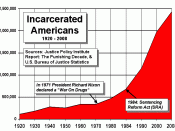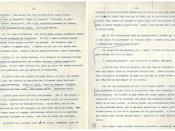The continued rise in juvenile crimes is becoming a threat to society as years go by. Crimes committed by children below age 15, have been reported as early as the 19th century when they faced about the same punishment as adult criminals: public shaming, incarceration, even execution by hanging. At least 10 juveniles who were 14 at the time of their offense were executed during the 1800æ¯ including two 10 years old, according to the Washington-based Coalition for Juvenile Justice (Kresnak, 2003, p2).
æÂÂt is apparent in this generation that the rate of teenage and younger children becoming juveniles delinquent is growing each year at a rapid paste. In 1985, there were 1,600 juvenile delinquents under the age of 12 years, in 1995, the number more than doubled to 3,400, and in 2005, the number rose to 4,700. During the same time period, the numbers grew from 31,400 in 1985, to 64,500 in 1995, and reached 77,600 across the United States of America (USA) for juvenile delinquents in the 13 to 15 age group (Puzzanchera and Kang, 2008).
As the rate of juvenile delinquency across the USA skyrockets, we begin to take a closer look at the juvenile systems in place and the factors that contribute to juvenile delinquency. According to Merrian-Webster Online Dictionary, juvenile delinquency is defined as æ onduct by a juvenile characterized by antisocial behavior that is beyond parental control and therefore subject to legal action.
Juvenile delinquent had been classified as a person under age (usually below 18), who is found to have committed a crime in states which have declared by law that a minor lacks responsibility and thus may not be sentenced as an adult. We located factor contributing to juvenile delinquency as location, gender, race, education, family status (one or two parent household), previous...


